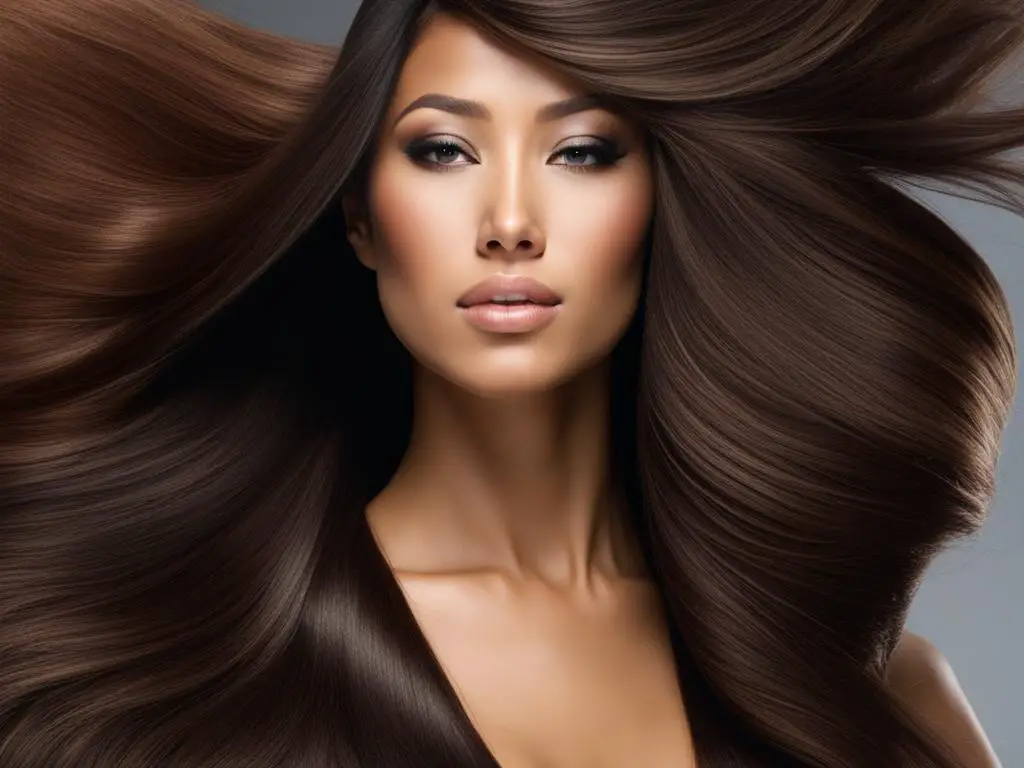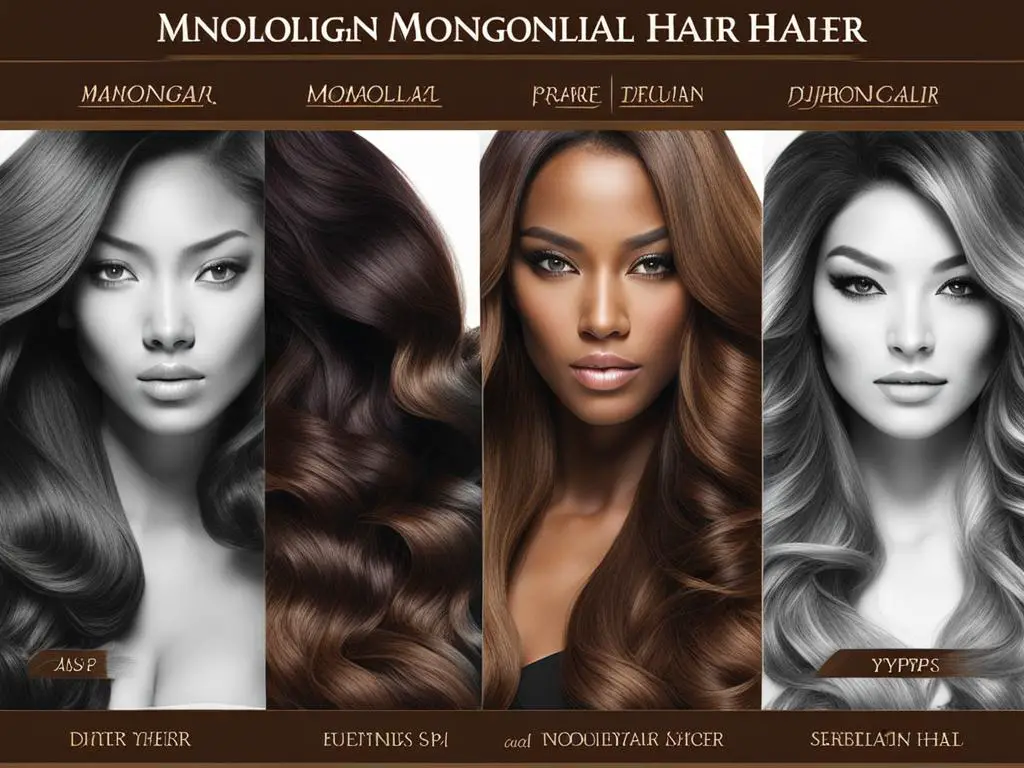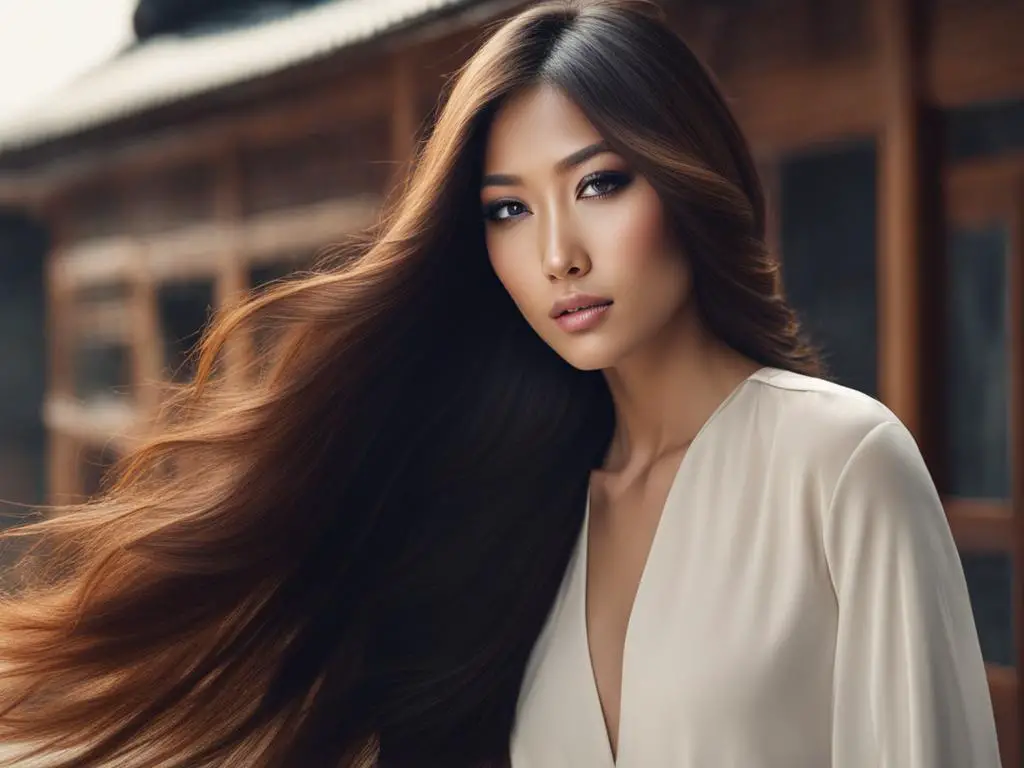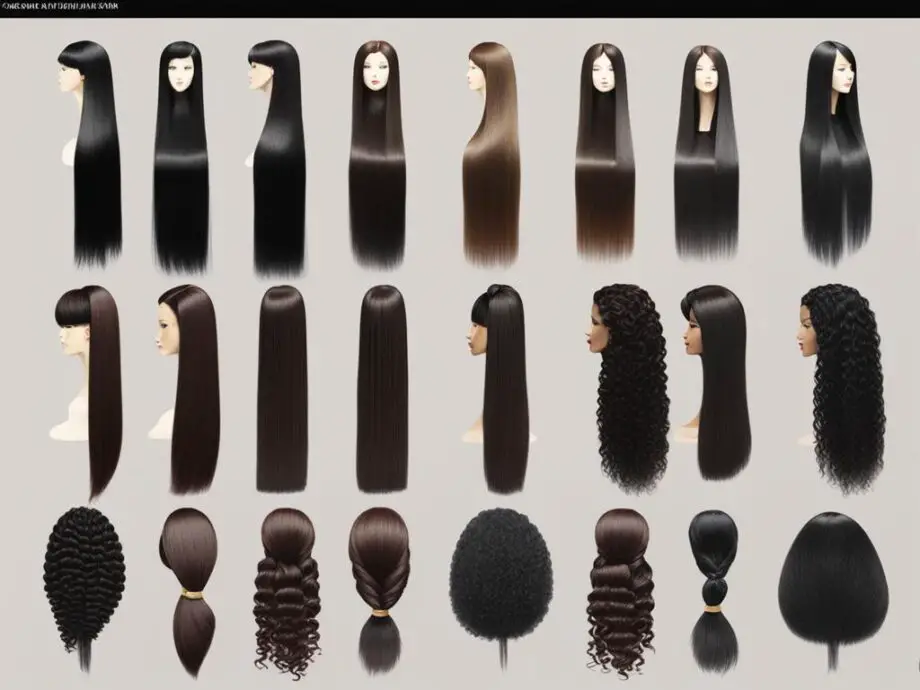Welcome to our in-depth comparison of Mongolian hair and Peruvian hair. When choosing hair extensions or wigs, it’s essential to evaluate the quality and compatibility of different hair types with your natural hair. Mongolian hair and Peruvian hair are two popular options, widely used worldwide.
In this section, we will provide you with a detailed quality comparison of Mongolian hair and Peruvian hair. You’ll learn about what makes these hair types unique and what factors to consider when choosing between them.
Key Takeaways
- Mongolian hair and Peruvian hair are among the most popular types of hair extensions on the market
- When comparing Mongolian hair and Peruvian hair, it’s essential to consider the texture, durability, and overall quality
- Your choice between Mongolian hair and Peruvian hair ultimately depends on your preference and the hairstyle you’re looking to achieve
- Factors like hair sourcing, quality certifications, and reputable suppliers are vital to keep in mind when selecting high-quality Mongolian or Peruvian hair
- Choosing quality hair extensions will help you achieve a natural and flattering look that complements your style
Understanding Mongolian Hair
When it comes to hair extensions, Mongolian hair is an excellent option for those looking for a natural and unique look. Mongolian hair strands stand out due to their natural thickness and durability, making them a popular choice among many. Mongolian hair is known for its texture, which is typically coarse with a slight wave. The hair also features natural color variations, ranging from dark black to a light brown.
The thickness of the Mongolian hair strands is a significant advantage for those looking for voluminous and lustrous hair. Its natural shine provides a lasting sheen that doesn’t diminish quickly. However, because of its thickness, Mongolian hair may require extra maintenance. Styling can be challenging, requiring you to use more products and effort than with other hair types.
Similarities and differences mongolian hair vs peruvian hair:
| Features | Mongolian Hair | Peruvian Hair |
|---|---|---|
| Texture | Coarse with a slight wave | Silky and straight |
| Thickness | Thick | Medium |
| Color Variations | Wide range of natural colors | Mostly limited to darker shades of brown and black |
| Durability | Durable | Highly durable |
| Natural Shine | Lasting but requires maintenance | Naturally lustrous and shiny |
Mongolian hair is an excellent choice for those seeking a natural look with added volume and durability. However, it may require more maintenance and styling effort than some other hair types. By understanding the features and unique qualities of Mongolian hair, you can determine if it is the right choice for your style.

Discovering Peruvian Hair
When it comes to hair extensions, Peruvian hair is a popular choice that offers a range of benefits. Its texture is naturally straight or wavy, giving it a sleek and glossy finish, perfect for a variety of hairstyles. Peruvian hair also tends to be denser and thicker than other types, making it ideal for fuller, more voluminous looks.
One of the key similarities between Mongolian hair and Peruvian hair is their natural appearance and feel. Both have a soft, silky texture that blends well with most hair types, offering a windblown, effortless look. However, there are some differences in texture and appearance to consider. While Peruvian hair is naturally straight or wavy, Mongolian hair has a naturally coarser, wavy texture.
If you prefer a sleek and lustrous style, Peruvian hair may be the better option for you. Its straight texture means it will require less styling to achieve a polished look, compared to the looser, wavy texture of Mongolian hair. However, if you desire more volume and texture, Mongolian hair is a great choice.
To further illustrate the similarities and differences between Mongolian hair vs Peruvian hair, check out the comparison table below:

Mongolian Hair vs Peruvian Hair: Comparison Table
| Characteristic | Mongolian Hair | Peruvian Hair |
|---|---|---|
| Texture | Naturally wavy and coarser | Naturally straight or wavy and silky |
| Thickness | Medium density | High density |
| Styling | Requires more effort and maintenance for a polished look | Straight texture requires less styling for a sleek finish |
| Volume | Naturally voluminous with a full-bodied appearance | Lacks volume compared to Mongolian hair |
Now that you know more about Peruvian hair, you can better decide which option is right for you based on texture, thickness, and ease of styling.
Pros and Cons of Mongolian Hair
When deciding between Mongolian hair and Peruvian hair, it’s essential to understand the advantages and drawbacks of each hair type. Mongolian hair is known for its thicker texture and durable quality, making it a popular choice for those looking for a natural and fuller look.
Pros of Mongolian Hair:
- Natural Shine: Mongolian hair is naturally lustrous, giving it a healthy and radiant appearance.
- Thicker Texture: Mongolian hair is thicker in texture than Peruvian hair, which is a desirable trait for those seeking voluminous hairstyles.
- Durability: Mongolian hair is known for its strength and resilience, making it a long-lasting hair option.
Cons of Mongolian Hair:
- Maintenance: Due to its thicker texture, Mongolian hair requires more maintenance to prevent tangles and matting. Proper care such as regular washing and conditioning is necessary.
- Styling: While it is ideal for creating fuller hairstyles, Mongolian hair may not be as versatile in styling options as other hair types.
Consider these pros and cons of Mongolian hair when deciding if it’s the right choice for your needs.

“Mongolian hair is thicker in texture, giving it a fuller appearance. However, proper maintenance is crucial for avoiding tangles and matting.”
Pros and Cons of Peruvian Hair
When choosing between Mongolian hair and Peruvian hair, it’s crucial to understand the pros and cons of both options. Peruvian hair is known for its versatility, adaptability to different hairstyles, and natural movement. It suits a wide range of styles and can easily blend with most hair textures.
One of the main advantages of Peruvian hair is its texture, which has a natural thickness and gives a full appearance. It also has a natural shine that enhances its beauty. Additionally, Peruvian hair requires little to no maintenance and can be easily styled with heat tools.
However, there are also some drawbacks to consider when choosing Peruvian hair. Its natural movement can result in tangling, especially if not well-cared for. Peruvian hair also tends to be more expensive than Mongolian hair, making it less accessible to some buyers.
In comparison to Mongolian hair, Peruvian hair is more adaptable to different hairstyles, making it a great choice for anyone looking for versatility. Mongolian hair, on the other hand, has a thicker texture that provides a more natural look. By comparing these aspects, you can determine which type of hair best suits your styling needs.
Peruvian Hair Pros and Cons: At a Glance
| Pros | Cons |
|---|---|
| Natural thickness and shine | Expensive compared to Mongolian hair |
| Adaptable to different hairstyles | May tangle if not well-cared for |
| Requires little to no maintenance |
When selecting between Mongolian hair and Peruvian hair, weighing the pros and cons of both options is essential. By doing so, you can make an informed decision that best aligns with your preferences and fits your budget.
Buying Guide for Mongolian Hair vs Peruvian Hair
If you’re looking for high-quality hair extensions, Mongolian and Peruvian hair are excellent options. But how do you ensure that you’re buying the best quality hair? Our buying guide will help you make an informed decision.
Sourcing
The first factor to consider is where the hair comes from. Both Mongolian and Peruvian hair have unique characteristics due to their respective regions. Mongolian hair is known for its thickness and durability, while Peruvian hair tends to be more versatile and adaptable to different hairstyles.
When buying hair, make sure it is sourced ethically and sustainably. Look for suppliers who work with reputable factories and distributors that prioritize ethical practices. This ensures that your hair extensions not only look great but are also sustainably sourced.
Quality Certifications
Another important factor to consider is quality certifications. Look for suppliers who have certifications like ISO or CE, which are globally recognized and demonstrate that the hair meets specific quality standards. These certifications provide peace of mind as you know you’re getting the best quality hair available.
Reputable Suppliers
It’s essential to buy hair from reputable suppliers who have a proven track record of quality and customer satisfaction. Look for suppliers with positive reviews and testimonials from satisfied customers. This ensures that you’re getting the best possible hair extensions that will last a long time.
When buying hair extensions, it’s crucial to do your research and choose the right supplier. This way, you can ensure that you’re not only getting the best quality hair possible, but you’re also supporting ethical and sustainable practices.
By following our buying guide, you can confidently choose between Mongolian hair and Peruvian hair and find the most natural and flattering look for your style.
Conclusion
Choosing the right hair type can make a significant difference in achieving a natural and flattering look. By exploring the unique characteristics of Mongolian hair and Peruvian hair in this article, we have provided you with the information needed to make an informed decision.
Whether you’re looking for a hair type that has a thicker texture and natural shine like Mongolian hair or one that offers adaptability and natural movement like Peruvian hair, both options have their pros and cons.
By keeping the factors discussed in our buying guide in mind, such as hair sourcing and quality certifications, you can be confident in your choice of the best quality hair type.
In conclusion, whether you choose Mongolian hair or Peruvian hair, what’s important is that you select the hair type that best complements your style and enhances your natural look. We hope this article has proved helpful in your decision-making process.
FAQ
What are the main differences between Mongolian hair and Peruvian hair?
Mongolian hair tends to be thicker and coarser in texture compared to Peruvian hair. Mongolian hair also has more color variations, ranging from dark brown to light blonde, while Peruvian hair is known for its natural black or dark brown shades. Additionally, Peruvian hair is generally silkier and has a higher luster, giving it a more polished look.
Which hair type is more durable, Mongolian hair or Peruvian hair?
Both Mongolian hair and Peruvian hair are known for their durability. However, due to its thicker texture, Mongolian hair is typically considered to be slightly more robust and resistant to damage. Peruvian hair is also durable, but may require more careful maintenance to maintain its shine and softness.
Can I achieve a natural look with both Mongolian hair and Peruvian hair?
Yes, both Mongolian hair and Peruvian hair can provide a natural look when styled and maintained properly. However, the final result may vary depending on your specific hair care routine, the quality of the hair, and how well you blend the extensions with your natural hair.
What are the pros of choosing Mongolian hair?
Mongolian hair offers several advantages. It has a thicker texture that provides more volume and body to your hairstyles. It also has a natural shine and is more resistant to tangling and shedding. Additionally, Mongolian hair offers a wide range of color options, allowing you to find the perfect match for your desired look.
What are the cons of choosing Mongolian hair?
One potential drawback of Mongolian hair is that its thicker texture may require more effort to maintain and style. It may also feel heavier on the head compared to finer hair types. Additionally, the wider range of color options in Mongolian hair may make it more challenging to find a precise color match if you have a specific shade in mind.
What are the pros of choosing Peruvian hair?
Peruvian hair is known for its versatility and natural movement. It blends seamlessly with various hair types and is easily styled to achieve different looks, from sleek straight hair to textured curls. Peruvian hair also has a lustrous shine that adds a glamorous touch to your hairstyles.
What are the cons of choosing Peruvian hair?
One potential consideration when choosing Peruvian hair is that its fine texture may be more prone to tangling or shedding compared to Mongolian hair. It may also require more frequent conditioning and careful maintenance to retain its softness and shine. Additionally, the limited color options in Peruvian hair may restrict your ability to find uncommon or vibrant shades.
What factors should I consider when buying Mongolian hair or Peruvian hair?
When buying Mongolian hair or Peruvian hair, it is crucial to consider factors such as the authenticity and quality of the hair, the reputation of the supplier, and any certifications or guarantees provided. It is advisable to purchase from reputable and trusted sources that offer high-quality hair extensions to ensure a satisfactory purchase.
